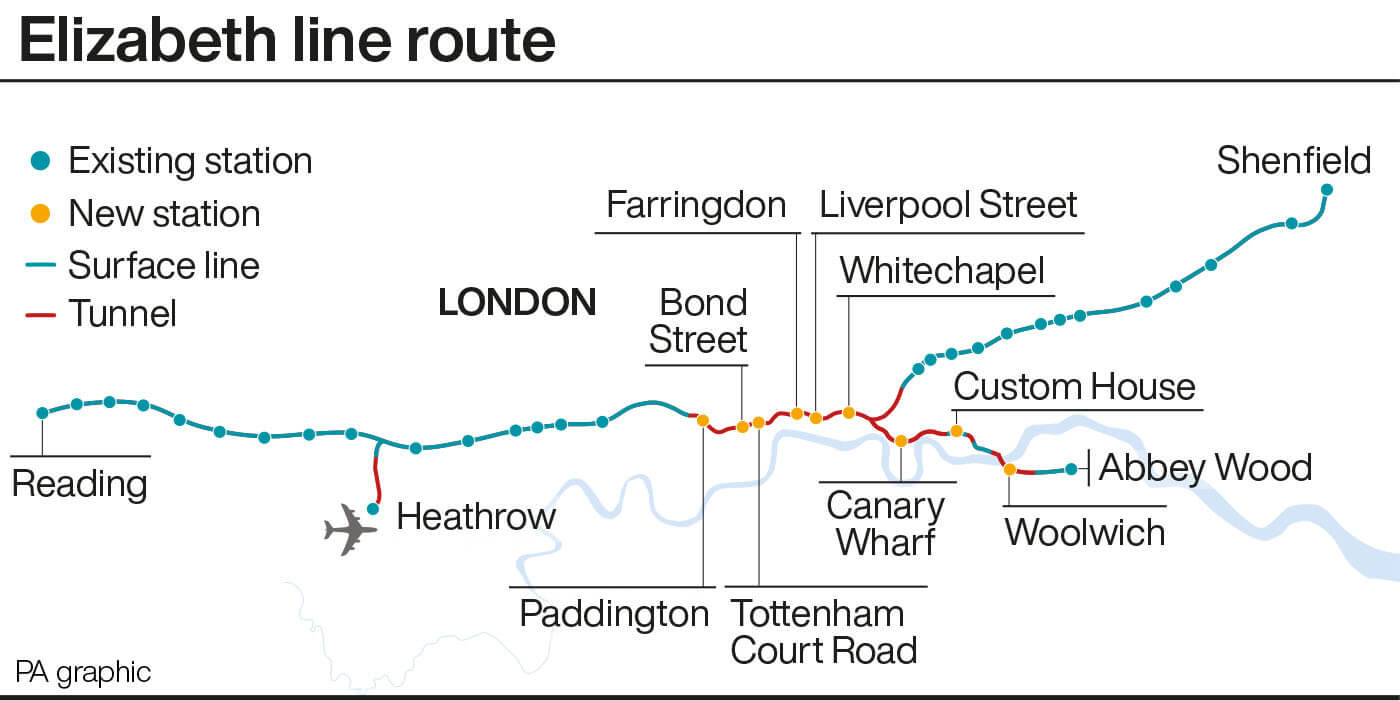If you’ve looked at the London Underground map lately, you may have noticed a sharp purple line cutting from east to west. This is the new Elizabeth Line, formerly known as Crossrail, a hybrid commuter rail and rapid transit service. It has been in development since 2005 and finally opened this year after financial and construction setbacks caused in part by the COVID19 pandemic. Now in service alongside the London Underground, it has several notable differences that set it apart from the Tube, from the trains themselves to the line’s operation. First and foremost, it is not a ‘tube line’ – it is a regular national railway line. But it coexists and operates side-by-side with the London Underground.
Perhaps the biggest and most obvious difference are the trains themselves. While the London Underground lines stock are either S7 or S8, the Elizabeth Line uses Class 345 trains. The Elizabeth Line’s 345 stock are based on the Aventa similar, but improved, to that used by other British Rail trains. The 345 is more suited to sub-surface passenger carrying but more powerful and faster than the average S7/S8. To give you an idea of the difference, the top speed of the Underground stock is about 62 mph while the 345 can do 90 mph. The 345 was made exclusively for Crossrail and is truly a hybrid between the Underground trains and the British Rail stock. Class 345 trains can also transport up to 1500 passengers per train.

The management of the two commuter systems is also different. While Transport for London has exclusive management of the London Underground, the Elizabeth Line is part-owned by TfL, National Rail, and Heathrow Airport Holdings. A separate management firm named MTR Corporation was granted an eight-year contract to operate Crossrail. Originating in Hong Kong in 1972, MTR manages mass transit systems throughout the world, including China, Australia, and Sweden. Additionally, unlike the rest of the London Underground, the Elizabeth Line presently only operates Monday through Saturday and has no service on Sundays (this will change).
When it comes to the Elizabeth Line’s support, it sets itself apart from the London Underground yet again. This Crossrail line has its own depot at Old Oak Common in West London and can service 42 of the line’s 70 trains at any given time. The Elizabeth Line also has a total of 41 stations with their own unique design, as the white curves of the platform tunnels feel like walking through the bones of some gigantic creature. The new stations for the line have their own modernist feel when coming out of the tunnels with glistening metal paneling that would make a good set for another Star Wars film (much as Canary Wharf did for Rogue One).
One of the largest changes is one that most of us probably wouldn’t recognize. For those passengers with mobility issues, they’ll be pleased to know that, unlike the rest of the London Underground, the Elizabeth Line is fully accessible. From street to platform, each station is step free, making it easier for all passengers to make their way to the train and onboard for their journey across London. And once inside, you’ll notice the trains have their own unique Moquette pattern in the line’s distinctive purple Pantone 275. Lastly, one thing that’s very important to point out and a bit of a detriment for the line is that the Oyster card won’t work for the entirety of the Elizabeth Line. Once you get past West Drayton, Oyster cannot be used, and passengers either need to use contactless or purchase a paper ticket for further travel. Most tourists, however, will only be using Oyster on the Elizabeth line in Central London but be warned if you venture further out.
So, as you can see, while the Elizabeth Line might be a bright new addition to the London Underground map, it is both part of and separate from the rest of the Tube. From the trains to the stations to how you use it, it has many distinct qualities that set it apart. Keep these in mind before you use the Elizabeth Line service and we hope you have a wonderful journey.


